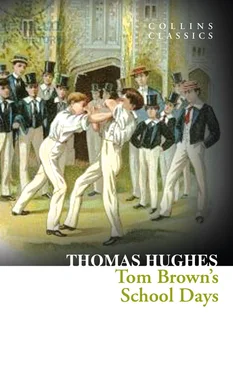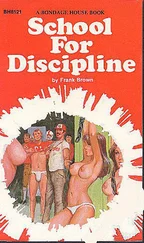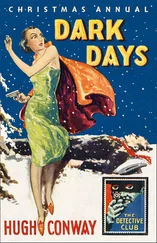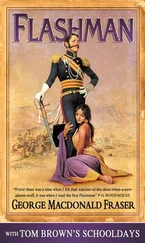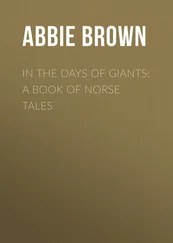TOM BROWN’S SCHOOL DAYS
Thomas Hughes
CONTENTS
Title Page TOM BROWN’S SCHOOL DAYS Thomas Hughes
History of Collins History of Collins In 1819, millworker William Collins from Glasgow, Scotland, set up a company for printing and publishing pamphlets, sermons, hymn books and prayer books. That company was Collins and was to mark the birth of HarperCollins Publishers as we know it today. The long tradition of Collins dictionary publishing can be traced back to the first dictionary William published in 1824, Greek and English Lexicon . Indeed, from 1840 onwards, he began to produce illustrated dictionaries and even obtained a licence to print and publish the Bible. Soon after, William published the first Collins novel, Ready Reckoner , however it was the time of the Long Depression, where harvests were poor, prices were high, potato crops had failed and violence was erupting in Europe. As a result, many factories across the country were forced to close down and William chose to retire in 1846, partly due to the hardships he was facing. Aged 30, William’s son, William II took over the business. A keen humanitarian with a warm heart and a generous spirit, William II was truly ‘Victorian’ in his outlook. He introduced new, up-to-date steam presses and published affordable editions of Shakespeare’s works and The Pilgrim’s Progress , making them available to the masses for the first time. A new demand for educational books meant that success came with the publication of travel books, scientific books, encyclopaedias and dictionaries. This demand to be educated led to the later publication of atlases and Collins also held the monopoly on scripture writing at the time. In the 1860s Collins began to expand and diversify and the idea of ‘books for the millions’ was developed. Affordable editions of classical literature were published and in 1903 Collins introduced 10 titles in their Collins Handy Illustrated Pocket Novels. These proved so popular that a few years later this had increased to an output of 50 volumes, selling nearly half a million in their year of publication. In the same year, The Everyman’s Library was also instituted, with the idea of publishing an affordable library of the most important classical works, biographies, religious and philosophical treatments, plays, poems, travel and adventure. This series eclipsed all competition at the time and the introduction of paperback books in the 1950s helped to open that market and marked a high point in the industry. HarperCollins is and has always been a champion of the classics and the current Collins Classics series follows in this tradition – publishing classical literature that is affordable and available to all. Beautifully packaged, highly collectible and intended to be reread and enjoyed at every opportunity.
Life & Times
Part 1
Chapter 1: The Brown Family
Chapter 2: The “Veast.”
Chapter 3: Sundry Wars and Alliances
Chapter 4: The Stage Coach
Chapter 5: Rugby and Football
Chapter 6: After the Match
Chapter 7: Settling to the Collar
Chapter 8: The War of Independence
Chapter 9: A Chapter of Accidents
Part 2
Chapter 1: How the Tide Turned
Chapter 2: The New Boy
Chapter 3: Arthur Makes a Friend
Chapter 4: The Bird-Fanciers
Chapter 5: The Fight:
Chapter 6: Fever in the School
Chapter 7: Harry East’s Dilemmas and Deliverances
Chapter 8: Tom Brown’s Last Match
Chapter 9: Finis
Footnotes
Classic Literature: Words and Phrases adapted from the Collins English Dictionary
Copyright
About the Publisher
In 1819, millworker William Collins from Glasgow, Scotland, set up a company for printing and publishing pamphlets, sermons, hymn books and prayer books. That company was Collins and was to mark the birth of HarperCollins Publishers as we know it today. The long tradition of Collins dictionary publishing can be traced back to the first dictionary William published in 1824, Greek and English Lexicon . Indeed, from 1840 onwards, he began to produce illustrated dictionaries and even obtained a licence to print and publish the Bible.
Soon after, William published the first Collins novel, Ready Reckoner , however it was the time of the Long Depression, where harvests were poor, prices were high, potato crops had failed and violence was erupting in Europe. As a result, many factories across the country were forced to close down and William chose to retire in 1846, partly due to the hardships he was facing.
Aged 30, William’s son, William II took over the business. A keen humanitarian with a warm heart and a generous spirit, William II was truly ‘Victorian’ in his outlook. He introduced new, up-to-date steam presses and published affordable editions of Shakespeare’s works and The Pilgrim’s Progress , making them available to the masses for the first time. A new demand for educational books meant that success came with the publication of travel books, scientific books, encyclopaedias and dictionaries. This demand to be educated led to the later publication of atlases and Collins also held the monopoly on scripture writing at the time.
In the 1860s Collins began to expand and diversify and the idea of ‘books for the millions’ was developed. Affordable editions of classical literature were published and in 1903 Collins introduced 10 titles in their Collins Handy Illustrated Pocket Novels. These proved so popular that a few years later this had increased to an output of 50 volumes, selling nearly half a million in their year of publication. In the same year, The Everyman’s Library was also instituted, with the idea of publishing an affordable library of the most important classical works, biographies, religious and philosophical treatments, plays, poems, travel and adventure. This series eclipsed all competition at the time and the introduction of paperback books in the 1950s helped to open that market and marked a high point in the industry.
HarperCollins is and has always been a champion of the classics and the current Collins Classics series follows in this tradition – publishing classical literature that is affordable and available to all. Beautifully packaged, highly collectible and intended to be reread and enjoyed at every opportunity.
In essence, Tom Brown’s School Days is a classic tale of good triumphing over evil. This may explain its enduring appeal, as the same theme has been played out in a great many stories since its publication in 1857. That isn’t to say that the author, Thomas Hughes, was the first to employ this allegory – writers have long been fascinated by the contrast between what makes people kind and unkind. Despite our efforts to attain high ethical and moral standards, we are still animals underneath, with the ability to be selfish and cruel. This realization leads us to question the extent to which nature and nurture play their respective parts in shaping our personality. On the face of it, it would seem that people are what they are, but psychology tells us there are many factors involved in determining the outcome. We are all, therefore, capable of a range of behaviours. The lynchpin is our relative ability to empathize and sympathize with others, as this is what determines our treatment of them.
Take away the allegory and Tom Brown’s School Days is a semi-autobiographical novel about life at Rugby school in the early Victorian period. Hughes was a Rugby ‘old boy’ and penned a lesser-known sequel, Tom Brown at Oxford (1861), which seems to imply that he was aiming for a certain readership. In fact, Hughes was not particularly elitist in his views and was an active social reformer and Christian socialist. These days he is labelled among the do-gooders of Victorian society, who saw it as their moral duty to right the wrongs that typified the hierarchical culture of Britain at that time. As well as standing for the rights of the common man, Hughes also felt very passionate about outlawing opium, which had become the drug of choice. Opium addiction was becoming a widespread problem in urban areas and was strongly associated with a general slide in moral virtues. Opium dens, public houses, and brothels went hand in hand with inner-city life and formed the complete antithesis of the values the Victorians championed.
Читать дальше
